sei bella cosi come sei || Hofer Brett || Edicola -> Kriz Olbricht
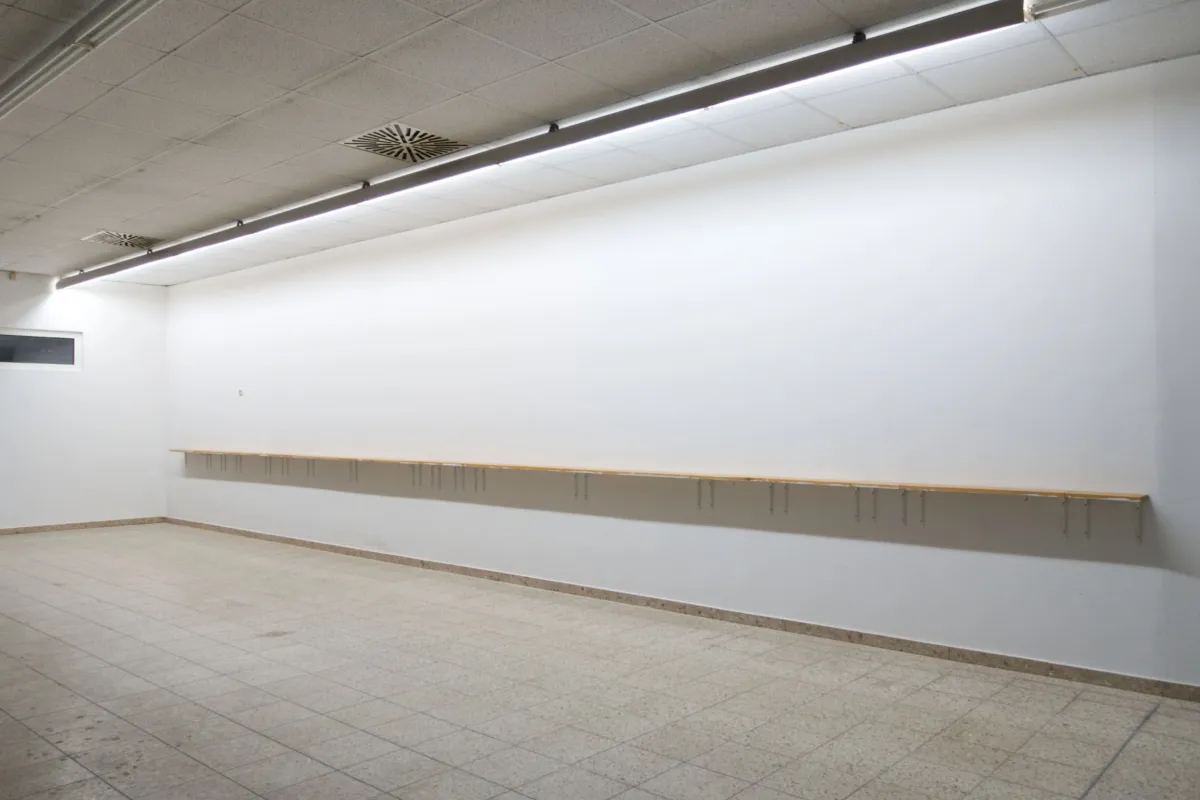
Edicola
2020 (2021, 2024)
Beton, an die Ecke des Ausstellungsraumes gesetzt.
2020 (2021, 2024)
Concrete, placed at the corner of the exhibition space.
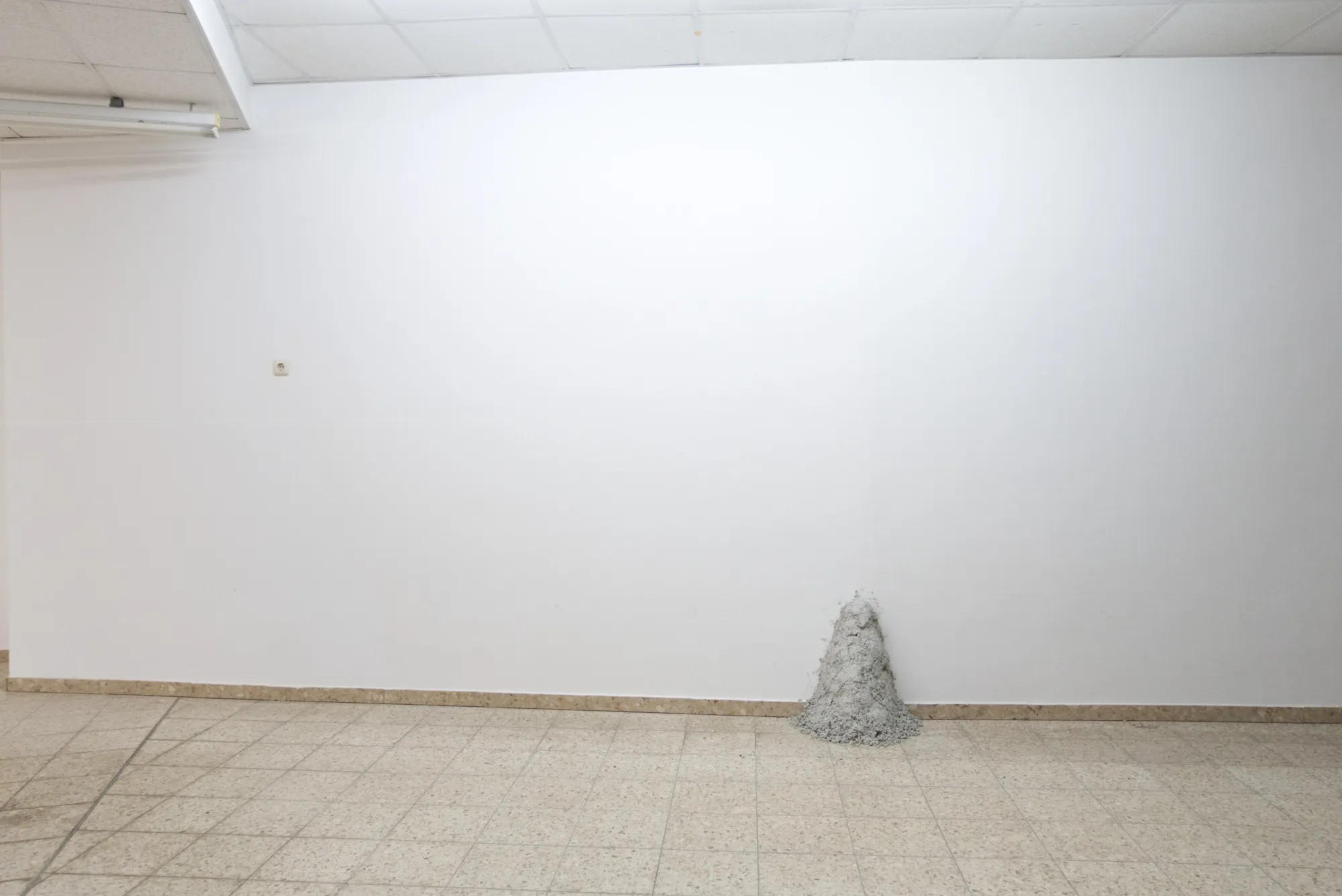
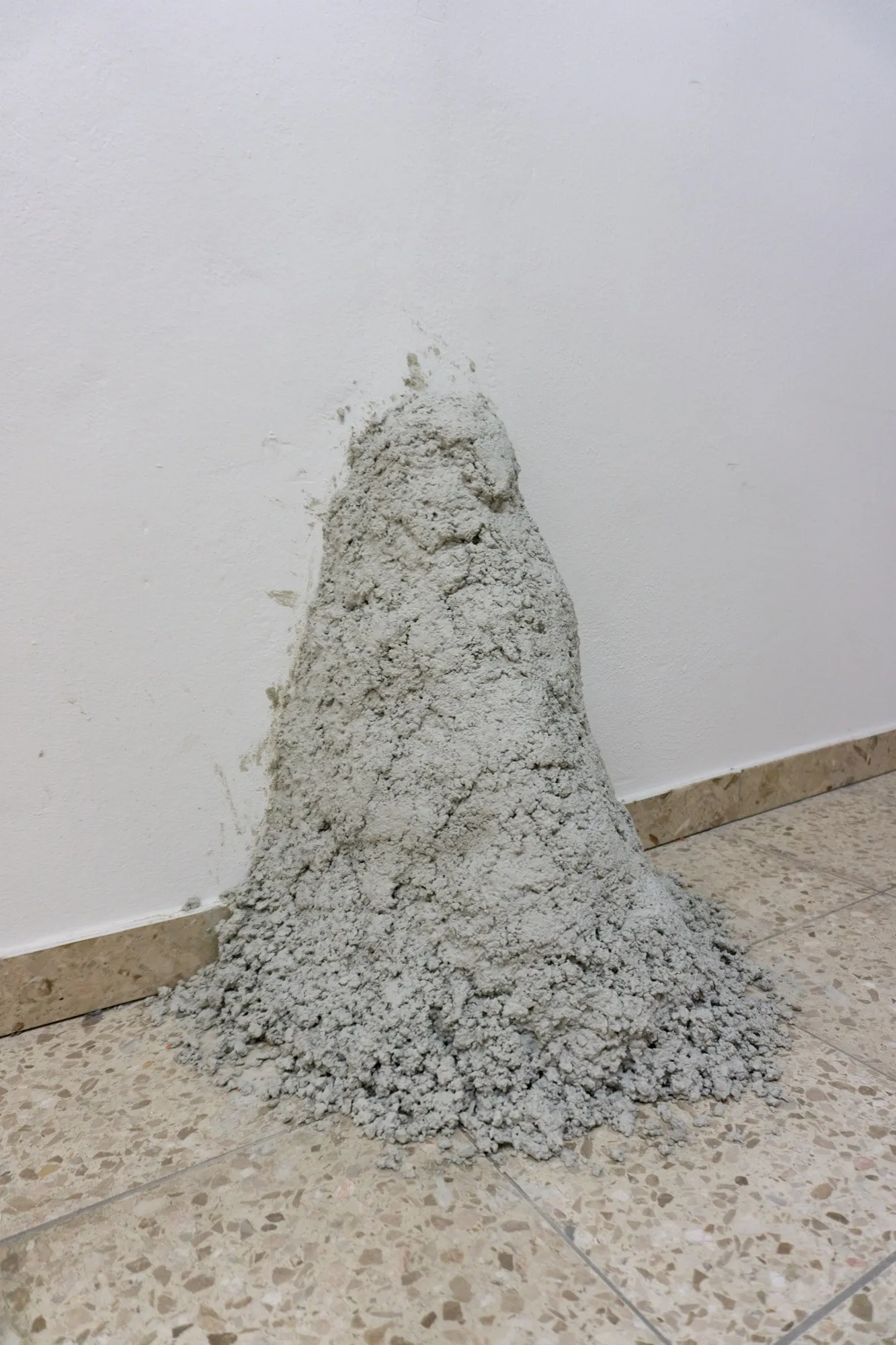
Edicola, 2020 (2021, 2024) // Fotos (von links nach rechts): Kriz Olbricht / Sophie Innmann, © 2024 VG Bild-Kunst, Bonn
Edicola, 2020 (2021, 2024)
Eine Ädikula bezeichnet in der Architektur eine Nische, z.B. in einer Gebäudefassade, in welcher Heiligenfiguren platziert wurden. Edicola könnte die Ausfüllung dieser negativen Raumaussparung sein. Gleichzeitig hat sich sich wie eine Zecke an die Ausstellungsarchitektur angehaftet: direkt an die Raumkante betoniert wird sie Bestandteil der Wand, auf welche sie sich gleichzeitig bezieht. Durch Olbrichts Setzung werden wir auf die Biegung aufmerksam, welche die Wand vollzieht. Die Form erinnert außerdem an die zahlreichen Pollern, die im Stadtraum zu finden sind: in Toreinfahrten verhindern sie links und rechts das Touchieren der Einfahrt.
Hofer Brett
2024
Abmontierte Rammschutzelemente aus Holz, mit Haken versehen und mit Winkeln an die Wand montiert.
2024
Dismantled wooden impact protection elements, fitted with hooks and mounted on the wall with brackets.
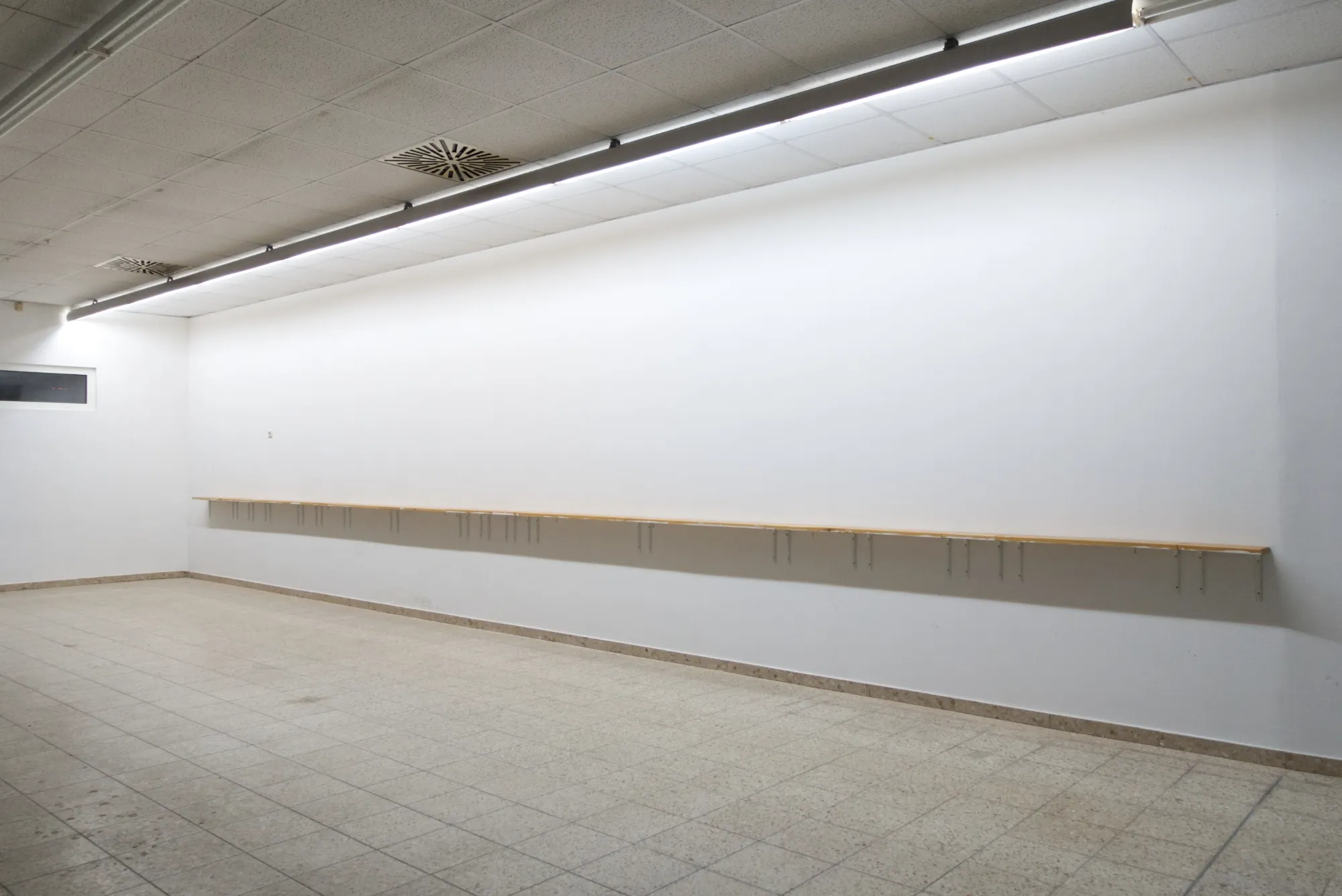
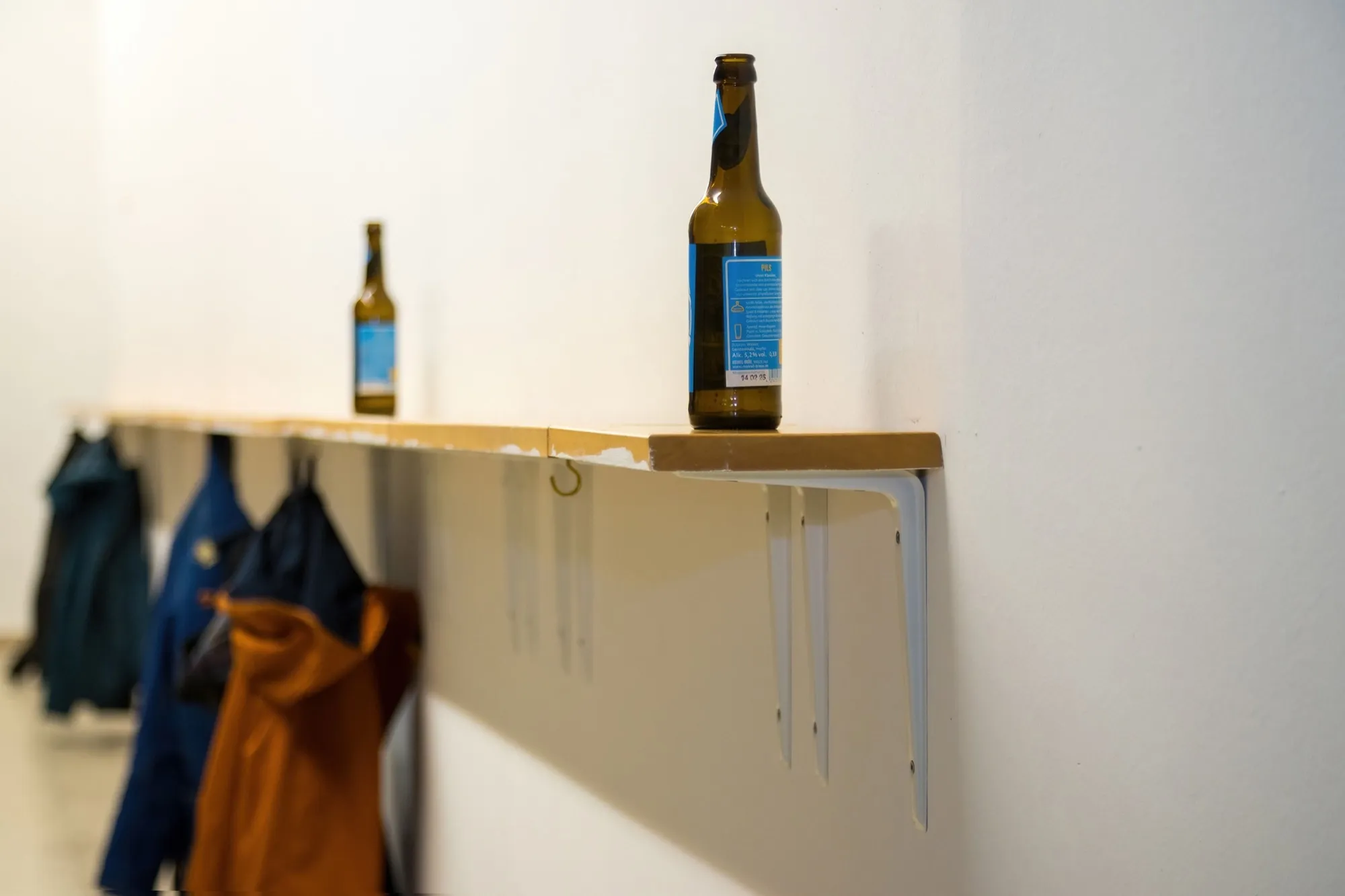
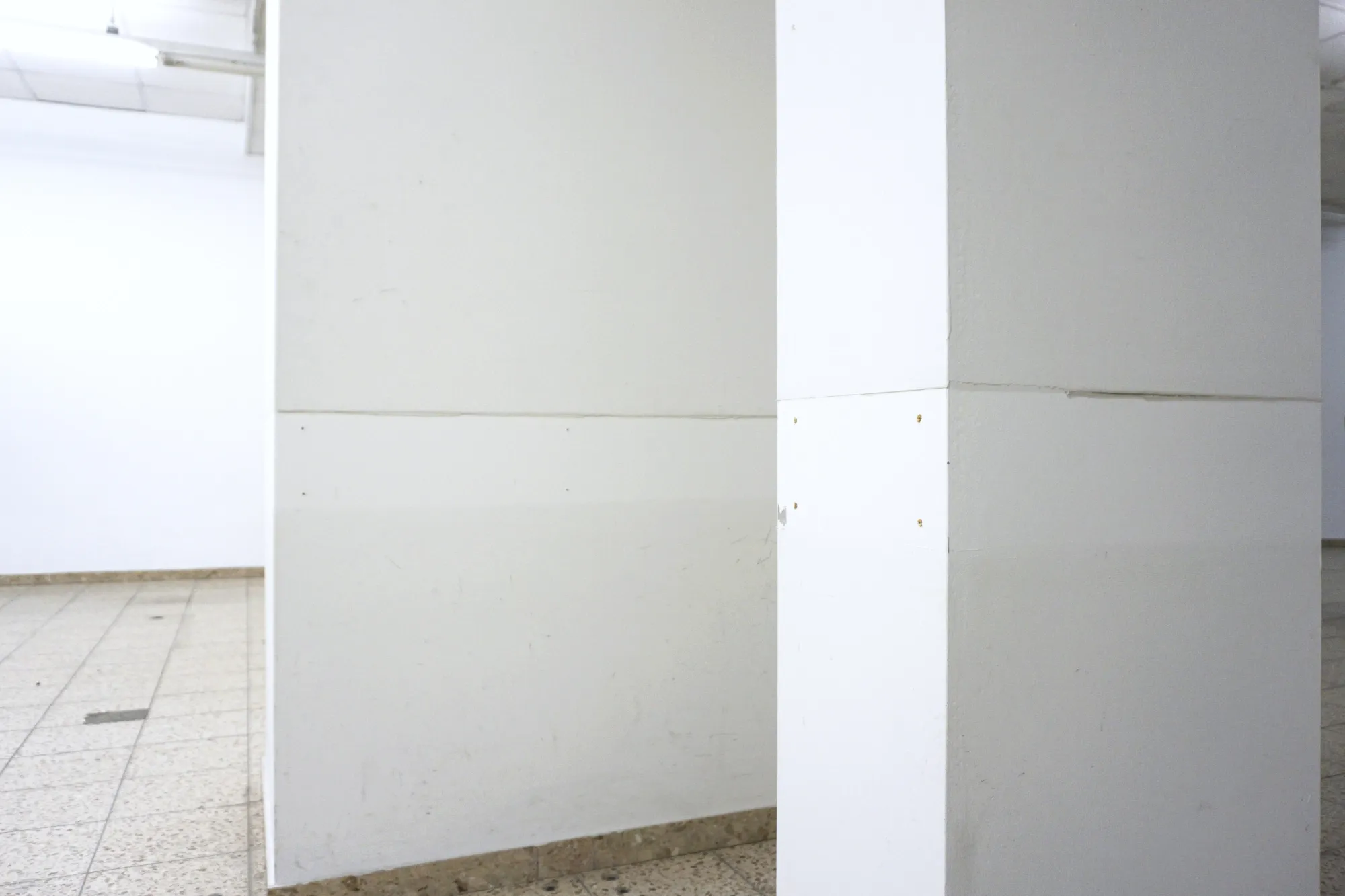
Hofer Brett, 2024 // Fotos (von oben links nach unten rechts): Kriz Olbricht / Dirk John / Sophie Innmann, © 2024 VG Bild-Kunst, Bonn
Hofer Brett, 2024
In den Ausstellungsräumen befand sich früher ein Einkaufsgeschäft, wovon noch die hölzerne Ummantelung der Säulen zeugt. Sie diente dazu, dass die Einkaufswägen keine Schäden an der Architektur hinterlassen. Sämtliche Raumschutzelemente wurden von Kriz Olbricht zu einer Art langer Tresen zusammengeführt. Was früher abweisende Funktion hatte, ist nun Einladung zum Zusammenkommen und Verweilen.
Die Arbeiten von Kriz Olbricht verhandeln das Verhältnis von Mensch und Raum. Seine Beobachtungen setzt Kriz Olbricht in inhaltlich verdichteten und formal reduzierten Installationen und Objekten ins Bild. Ein wichtiger Teil des in Köln lebenden Künstlers ist das gemeinschaftliche Arbeiten in Projekträumen sowie das Konzipieren von ortsspezifischen Ausstellungsprojekten.
sei bella cosi come sei
2024
Elf Vogelhäuschen stehen auf der Brachfläche im Wildwuchs und werden nach Sonnenuntergang von Solarstrahlern beleuchtet.
2024
Eleven birdhouses stand on the wasteland in the wild growth and are illuminated by solar spotlights after sunset.
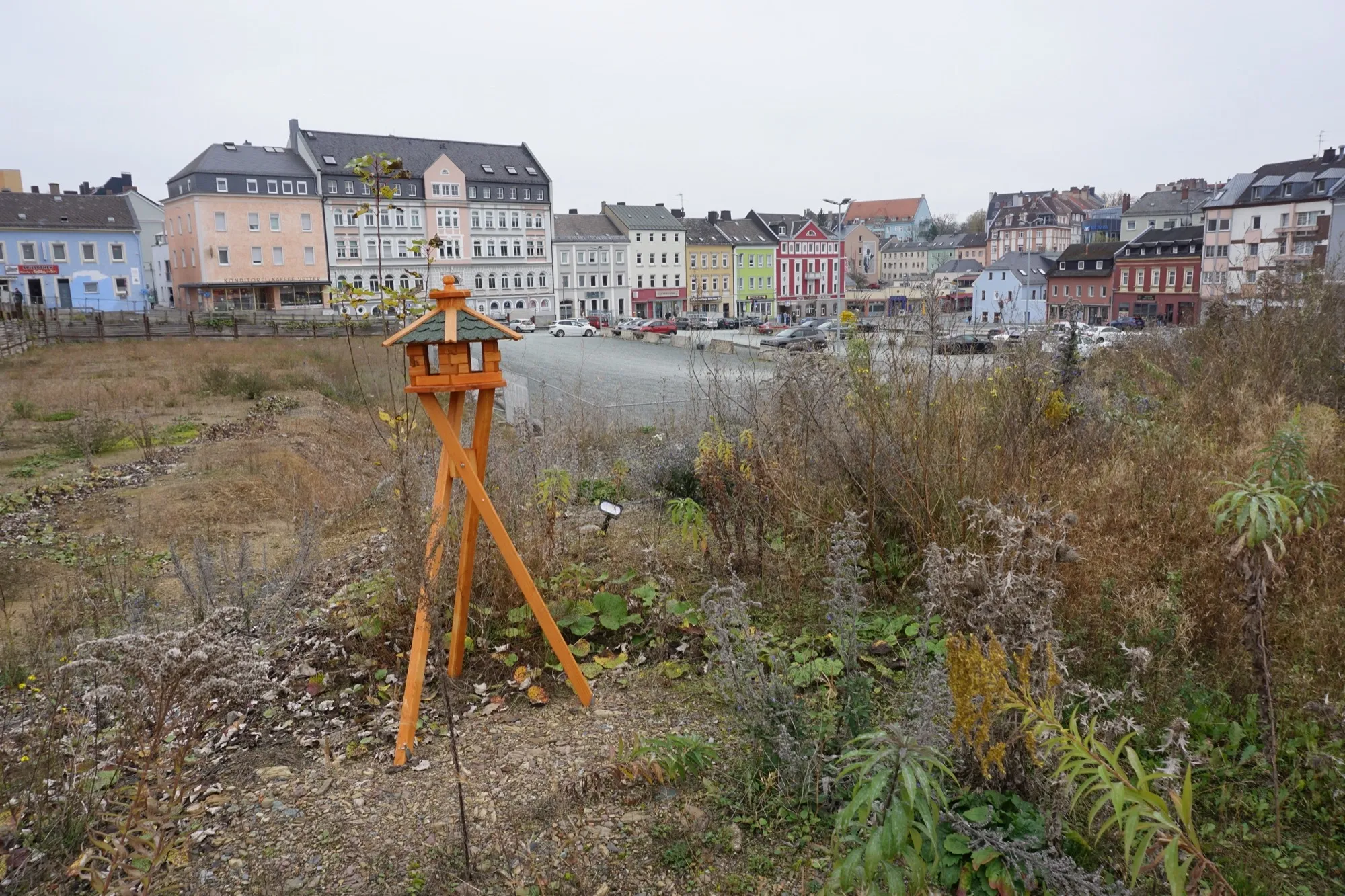
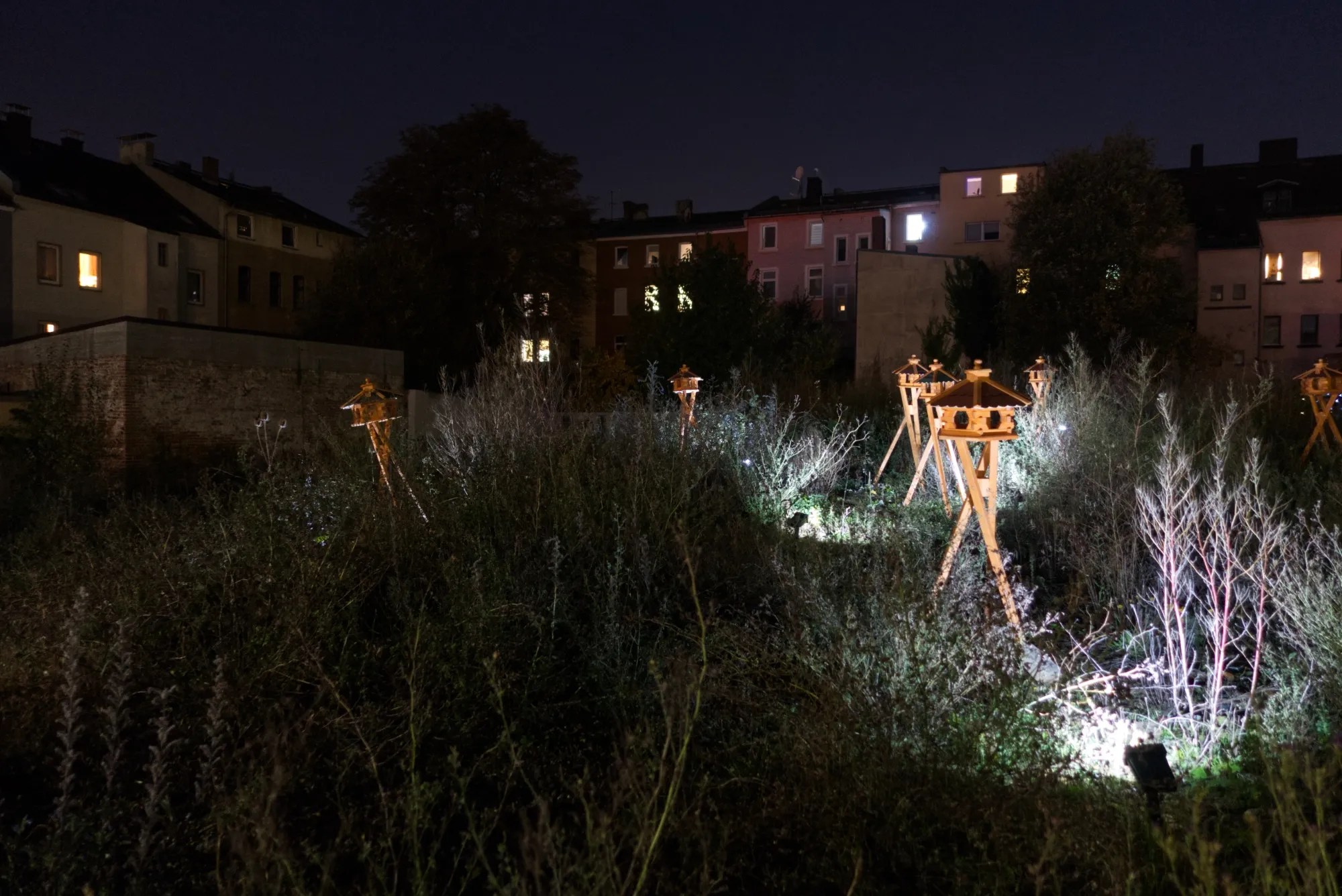
sei bella cosi come sei, 2024 // Fotos (von oben links nach unten rechts): Sophie Innmann / Kriz Olbricht, © 2024 VG Bild-Kunst, Bonn
sei bella cosi come sei, 2024
Die Installation sei bella cosi come sei lenkt den Blick auf eine freie Stelle im organisierten städtischen Raum. Dort wo Stillstand gesehen wird, entwickelte sich eine Dritte Landschaft, „ein Territorium jenes Refugiums der Artenvielfalt, die sonst überall verjagt wird“1 wie der Landschaftsarchitekt und Botaniker Gilles Clément schreibt. In diesem Areal verteilen sich in lockerer Anordnung Vogelhäuschen, einem weitverbreiteten Gestaltungselement in Gärten. Die Häufung und die Fehlplatzierung, den die verkleinerten menschlichen Architekturen in der Brachfläche darstellen, lässt sie wie ein Rudel von hochbeinigen Tieren erscheinen, die sich verirrt haben. Sie sind nicht mehr Bühne für Vögel sondern werden selbst zu Akteuren, was Abends durch die Beleuchtung noch betont wird.
Text: Kriz Olbricht
Edicola, 2020 (2021, 2024)
In architecture, an aedicula refers to a niche, e.g. in a building façade, in which figures of saints were placed. Edicola could be the filling of this negative spatial recess. At the same time, it has attached itself to the exhibition architecture like a tick: poured in concrete directly onto the edge of the room, it becomes part of the wall to which it simultaneously refers. Olbricht's placement draws our attention to the bend in the wall. The shape is also reminiscent of the numerous bollards that can be found in urban spaces: in gateways, they prevent people from touching the entrance on the left and right.
Hofer Brett, 2024
The exhibition space used to house a store, still indicated by the wooden protetive cover of the columns. It served to prevent the shopping carts from damaging the architecture. Kriz Olbricht combined all the protective elements to create a kind of long counter. What used to serve as a barrier is now an invitation to come together and linger.
Kriz Olbricht's works negotiate the relationship between people and space. Kriz Olbricht presents his observations in installations and objects that are condensed in terms of content and reduced in form. An important part of the Cologne-based artist's work is collaborative work in project spaces and the conception of site-specific exhibition projects.
sei bella cosi come sei, 2024
The installation sei bella cosi come sei draws attention to a vacant spot surrounded by an organized urban space. Where standstill is seen, a third landscape has developed, “a territory of that refuge of biodiversity that is chased away everywhere else ”1 as the landscape architect and botanist Gilles Clément writes. In this area, birdhouses, a widespread design element in gardens, are distributed in a loose arrangement. The accumulation and misplacement of the scaled-down human architecture in the wasteland makes them look like a pack of high-legged animals that have lost their way. They are no longer a stage for birds but become actors themselves, which is further emphasized by the lighting in the evening.
Text: Kriz Olbricht
FOOTNOTES
1 Gilles Clément, Manifest der Dritten Landschaft, Merve Verlag, Berlin 2010.
